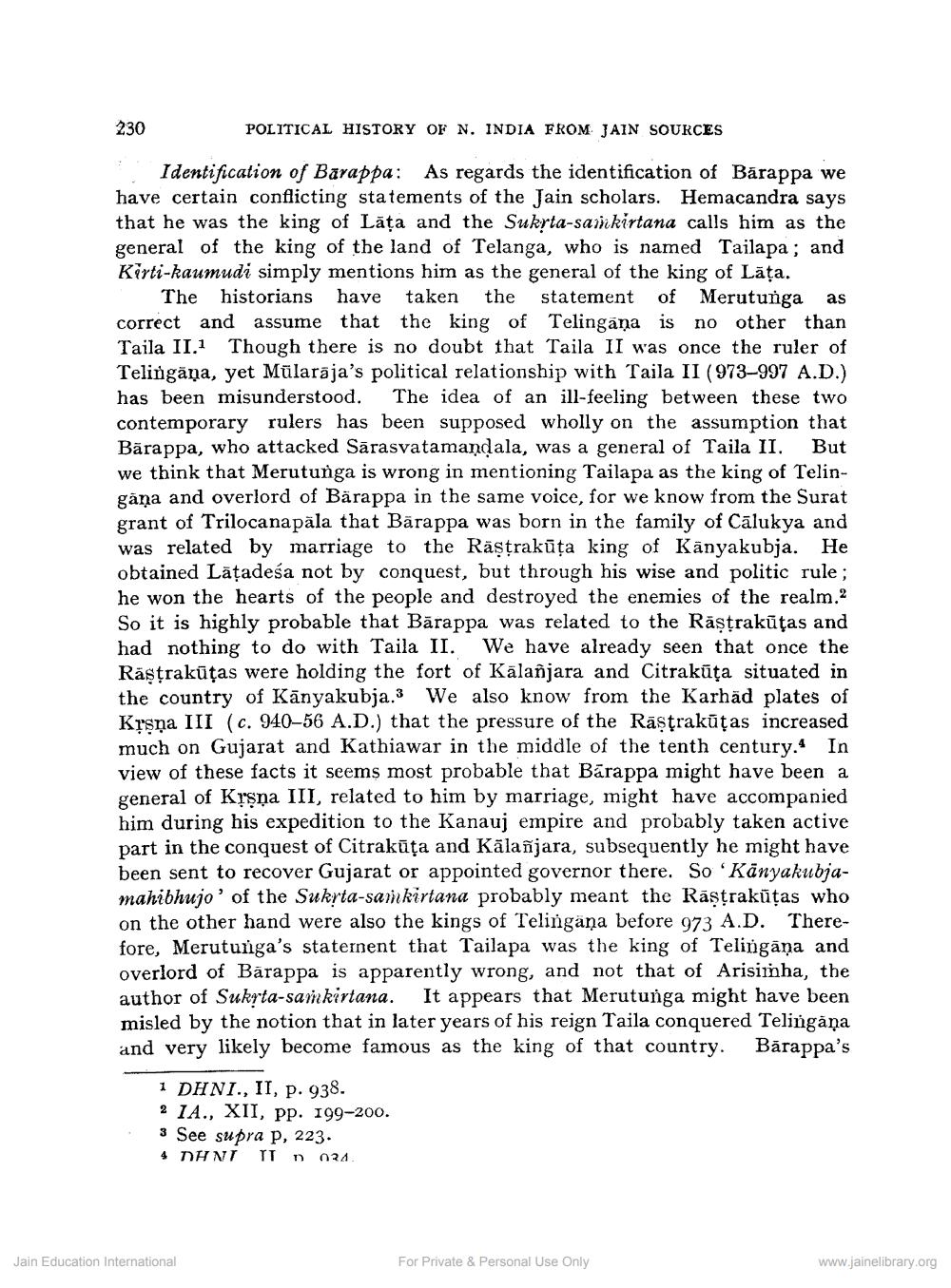________________
230
POLITICAL HISTORY OF N. INDIA FROM JAIN SOURCES
Identification of Barappa: As regards the identification of Bārappa we have certain conflicting statements of the Jain scholars. Hemacandra says that he was the king of Lāța and the Sukrta-samkirtana calls him as the general of the king of the land of Telanga, who is named Tailapa; and Kirti-kaumudi simply mentions him as the general of the king of Lāța.
The historians have taken the statement of Merutunga as correct and assume that the king of Telingāna is no other than Taila II.1 Though there is no doubt that Taila II was once the ruler of Telingäņa, yet Mülarāja's political relationship with Taila II (973–997 A.D.) has been misunderstood. The idea of an ill-feeling between these two contemporary rulers has been supposed wholly on the assumption that Bārappa, who attacked Sārasvatamandala, was a general of Taila II. But we think that Merutunga is wrong in mentioning Tailapa as the king of Telingana and overlord of Bärappa in the same voice, for we know from the Surat grant of Trilocanapala that Bārappa was born in the family of Cālukya and was related by marriage to the Rästrakūța king of Kanyakubja. He obtained Lāţadesa not by conquest, but through his wise and politic rule; he won the hearts of the people and destroyed the enemies of the realm.2 So it is highly probable that Bārappa was related to the Rāştrakūțas and had nothing to do with Taila II. We have already seen that once the Rästrakūțas were holding the fort of Kālañjara and Citrakūta situated in the country of Kānyakubja.3 We also know from the Karhäd plates of Krsņa III (c. 940–56 A.D.) that the pressure of the Răstrakūtas increased much on Gujarat and Kathiawar in the middle of the tenth century. In view of these facts it seems most probable that Bārappa might have been a general of Kisņa III, related to him by marriage, might have accompanied him during his expedition to the Kanauj empire and probably taken active part in the conquest of Citrakūta and Kālañjara, subsequently he might have been sent to recover Gujarat or appointed governor there. So 'Kanyakubjamahibhujo' of the Sukrta-sam kirtana probably meant the Rāstrakūțas who on the other hand were also the kings of Telingana before 973 A.D. Therefore, Meruturga's statement that Tailapa was the king of Telingāna and overlord of Bärappa is apparently wrong, and not that of Arisimha, the author of Sukrta-samkirtana. It appears that Merutunga might have been misled by the notion that in later years of his reign Taila conquered Telingāņa and very likely become famous as the king of that country. Bārappa's
1 DHNI., II, p. 938. 2 1A., XII, pp. 199-200. 3 See supra P, 223. 4 DHNI ITD 024.
Jain Education International
For Private & Personal Use Only
www.jainelibrary.org




